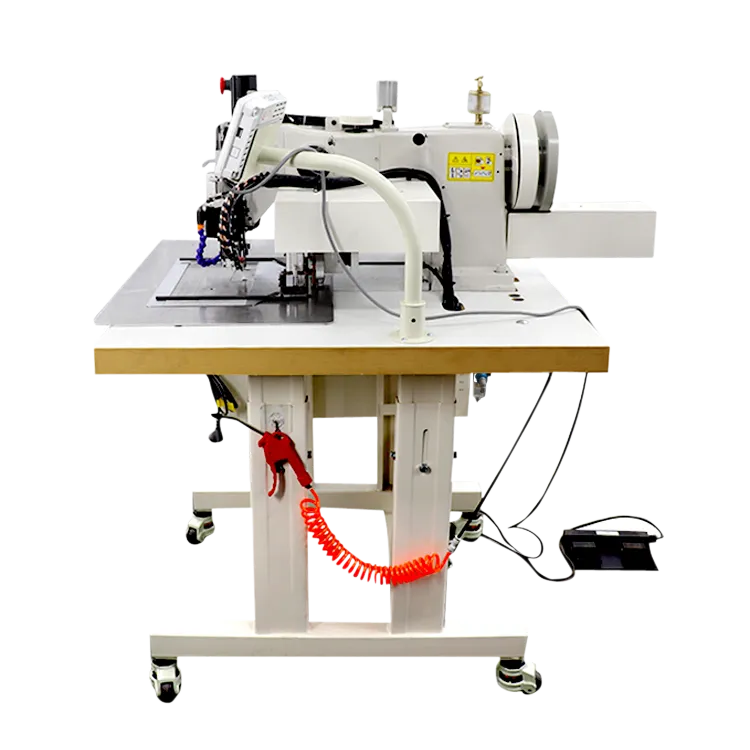Understanding the Purpose and Benefits of an Overlocker Sewing Machine
What is an Overlocker and Its Uses in Sewing?
An overlocker, also known as a serger in some regions, is a specialized sewing machine designed to create professional-looking finished edges on fabrics while also preventing fraying. Commonly used in both industrial and home sewing environments, overlockers have gained popularity due to their ability to produce high-quality seams and hems quickly. This article will delve into the functions, benefits, and various uses of an overlocker in sewing.
Understanding the Overlocker
At first glance, an overlocker might seem similar to a conventional sewing machine, but it is designed to perform specific tasks that enhance the efficiency of sewing projects. An overlocker typically operates with multiple threads, often ranging from three to five, which allows it to sew, cut, and finish the edges of the fabric simultaneously. This multitasking ability speeds up the sewing process and ensures a clean, professional finish.
One of the defining features of an overlocker is its ability to trim excess fabric as it sews, making it particularly useful for working with knit fabrics and stretchy materials. The cutting blade that runs alongside the needle allows for a seamless edge that won’t unravel, an essential aspect for garments that undergo wear and tear.
Key Functions
The primary function of an overlocker is to create finished seams that are both durable and visually appealing. It achieves this through various stitch types, such as the overlock stitch, rolled hem, and flatlock stitch. Each stitch serves a specific purpose, providing options for different fabric types and project requirements.
1. Seam Finishing Overlockers are ideal for finishing raw edges, preventing fabric from fraying and extending the life of the garment. 2. Hemming The rolled hem feature allows for the creation of a narrow hem that is both neat and secured, perfect for lightweight fabrics and formal wear. 3. Creating Stretch Seams With the capability to sew with multiple threads, overlockers are particularly useful for stretch fabrics, ensuring that seams retain their elasticity even after repeated use and washing.
what is an overlocker for

4. Flatlock Seams This type of seam is popular in activewear and swimwear, providing a comfortable flat finish that minimizes irritation against the skin.
Benefits of Using an Overlocker
There are several advantages to incorporating an overlocker into your sewing toolkit
- Time Efficiency Since it can cut and sew in one go, using an overlocker significantly reduces sewing time, allowing for quicker project completion. - Professional Finish Overlockers produce neat edges and seams, giving garments a polished and factory-like appearance.
- Versatility With the ability to work on various fabric types, from cotton to lycra, overlockers are not limited to specific materials, making them versatile tools for different sewing projects.
- Enhanced Durability The strong seams created by an overlocker help garments withstand wear and washing, which is particularly advantageous for clothing that will see frequent use.
Conclusion
An overlocker is an invaluable addition to any sewing enthusiast’s toolkit. It simplifies the process of creating high-quality, professional-looking garments by offering quick and efficient finishing techniques. From seam finishing to hemming and producing stretch seams, the versatility and efficiency of an overlocker make it an essential machine for anyone looking to elevate their sewing projects. Whether you are a beginner or an experienced sewist, investing in an overlocker can open new avenues for creativity and enhance the quality of your handmade garments.
-
Leather Sewing Machine: The Industrial Standard for Tough MaterialsNewsJul.18,2025
-
Sail Making Machine: Heavy-Duty Stitching for Industrial and Marine NeedsNewsJul.18,2025
-
Sling Sewing Machine: The Backbone of Heavy-Duty FabricationNewsJul.18,2025
-
Leather Sewing Machine: Precision for Heavy-Duty StitchingNewsJul.18,2025
-
Big Bag Sewing Machine: Powering the Future of Bulk PackagingNewsJul.18,2025
-
FIBC Sewing Machine: Essential Equipment for Bulk Bag ProductionNewsJul.18,2025
-
Heavy Duty Leather Sewing Machine: A Must-Have for Professional LeatherworkNewsMay.28,2025





























